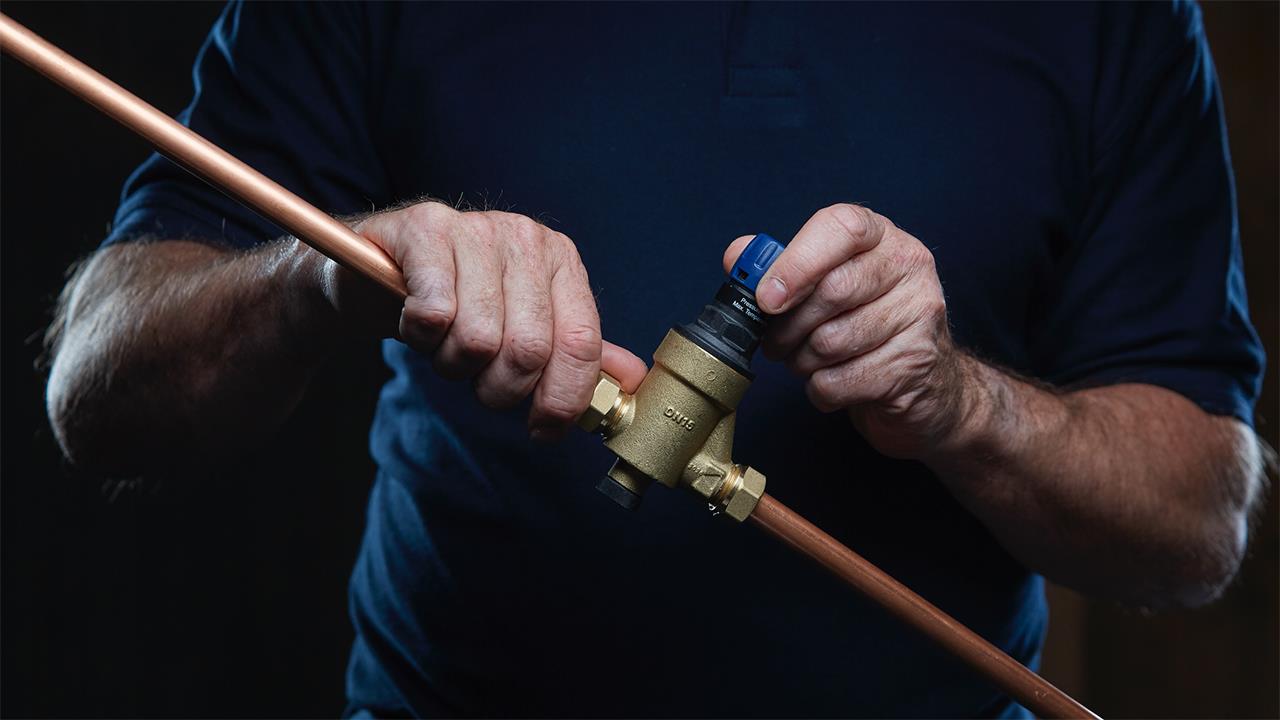

We’ve talked about TMVs, now it’s time to spotlight another important valve, the pressure reducing valve (PRV).
A PRV reduces water pressure from a higher to lower outlet pressure, enabling stable control over appliances and fixtures. They are commonly installed in high pressure and have three key internal parts: the valve seat, which pulls down as the water passes through the PRV, and the piston and spring mechanism, which create resistance to ensure pressure is reduced.
This drop tight design is a safety mechanism, preventing potential back pressure from passing through the valve. PRVs installed into larger systems should include this feature.
Key consideration is the pressure reduction ratio value. An example is a ratio of 10:1. If the inlet pressure is 10 bar, it can be reduced to 1 bar without adverse effects. If the inlet pressure is 15 bar, the valve can only be reduced to 1.5 bar. Beware, this higher pressure can lead to valve cavitation, which can damage the valve seat, causing the pressure to creep when no taps are running.
Cancel the noise
Taking a high inlet pressure and reducing it to a low outlet pressure might lead to noise, which can be prevented in system design. If a staging reducer (set at a higher outlet pressure) and individual reducers for each area are installed, it will seamlessly reduce the pressure.
This gives secondary protection to the individual dwelling valves, ensuring the valve lifetime is maintained.
Low flow noise is another potential issue. It’s 2am in an apartment complex, someone flushes the toilet, causing a wail through the pipework – waking up the whole building. This is the low flow effect usually caused by a large staging PRV, which is capable of large flow rates but only drawing 6-9l/pm for the toilet flush. The noise is the creaking of the staging valve opening to such small flow rates, which can be prevented with a smaller bypass valve.
This can be tee’d into the inlet before the staging PRV and linked across to the outlet side of the staging PRV. Once installed, it should be set to .5 of a bar above the staging valve’s set pressure. This means the smaller valve opens first, allowing for the 6-9l/pm to pass through without opening the staging valve, eliminating the risk of noise.
Most PRVs are adjustable and can be set at a pressure that is optimal for its application, meaning the flow rate is guaranteed, enabling water efficiency within a building too.
Find out more about our PRVs: www.reliancevalves.com/gb/en/products/flow-control/pressure-reducing-valves
If you'd like to keep up-to-date with the latest developments in the heating and plumbing industry, why not subscribe to our weekly newsletters? Just click the button below and you can ensure all the latest industry news and new product information lands in your inbox every week.